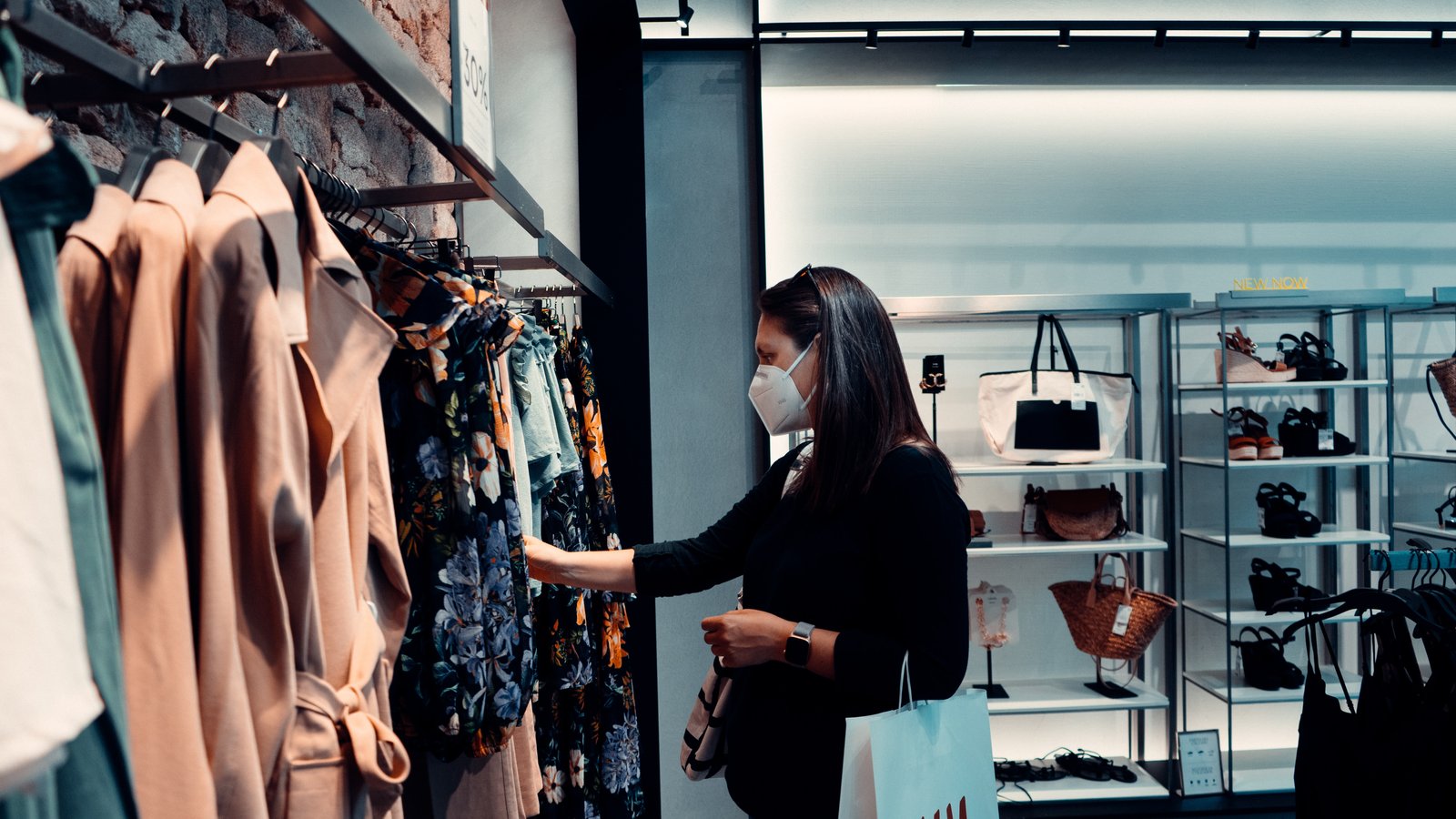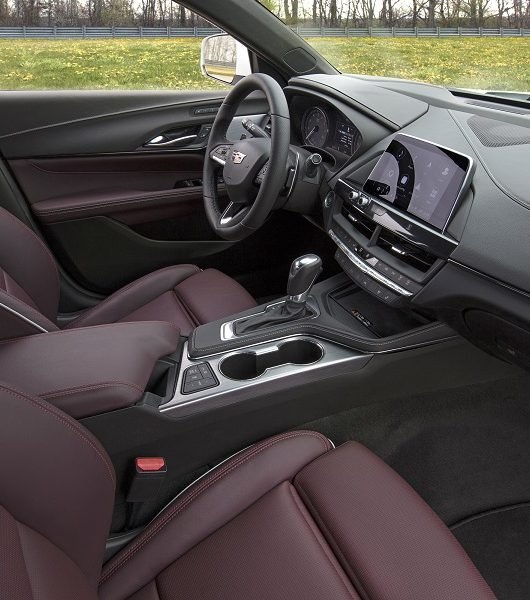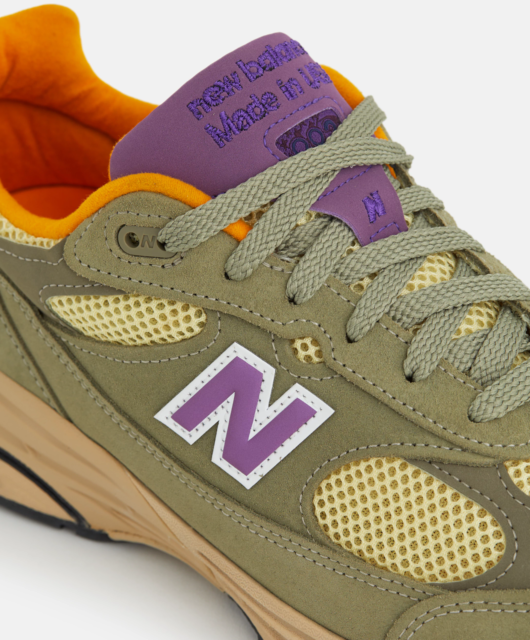Week: June 1st -5th
by Interbrand
The latest of Interbrand’s regular round-ups of brands’ responses to the global COVID-19 pandemic

Technology
Netflix has announced that it will begin reaching out to inactive users, who haven’t streamed anything on the platform in a year or more. The pandemic’s impact on the economy has inspired the company to ask these customers if they would still like to subscribe. If the users don’t respond, Netflix will automatically stop billing them for the subscription; as Netflix explained, “The last thing we want is people paying for something they’re not using… we hope this new approach saves people some hard-earned cash.”
These “zombie” accounts, however, make up less than half of 1% of Netflix’s total user base, which has grown by over 15 million as a result of COVID. As many brands like Panera (unlimited coffee for USD 9/month) and even cat litter company Litterbox launch subscription services, Netflix’s gesture stands out as a rare play in this sector, as the brand shows consumers – even those who choose not to pay them – that it has their best interests at heart, and that they’ll make cancelling a zero-effort process. Subscription services that don’t demonstrate equivalent levels of empathy will stand out in contrast.
In a move that could be highly significant for autonomous vehicles and emergency services, particularly in the developing world, Google has made it easier for anyone with an Android device to share their location using Plus Codes in Google Maps. A Plus Code is a simple alphanumeric code which can be combined with a locality (for example: FWM8+V9, Ibadan, Nigeria). They look like a regular address, but with a short code where a street name or number would be. Plus Codes are searchable on Google Maps and even Google Search, meaning everywhere on the planet can now be uniquely identified. More than 2 billion people on the planet – about 25 per cent or more – either don’t have an address or have an address that isn’t easy to locate. Digital locations through Plus Codes means that everywhere now has an easily identifiable location, saving time and getting resources there when it matters. Not having an address should no longer be a barrier to easily sharing a location with service providers.
Media
This year’s September issues of fashion magazines, usually published in mid-August, are likely to drop back to September this year, allowing more time for ads and samples to roll in. It will also give editors additional time to shoot models and celebrities, which has been difficult during lockdown. “Our September issues will come out in September,” said Carol Smith, publisher of Hearst’s Harper’s Bazaar, Marie Claire and Elle.
“When we started talking to Italy [in mid-May] only a handful [of brands] had shot their campaigns… so on that side giving them more time to create their ads for sure, but on the edit side giving our editors more time to get in their samples,” Smith added. In terms of ads, only around three brands have told Smith they won’t advertise in September. Others, though, are scaling back their usual spend. For Vogue, the newsstand release date is also early September. Such a move by Vogue and other titles could also align with the reopening of more retail stores. As for whether a later September issue will become the new norm in publishing, too, Hearst’s Smith hopes so.
“I genuinely believe we should hold to this schedule and I think it does feel like finally fashion is going to change its delivery schedule. And hopefully retailers will create new selling seasons, so October isn’t when all of fall goes on sale.”
In spite of the challenges publishers are facing now with diminished ad sales, distracted readers and uncertainty everywhere, Harvard Business Review has seen its multi-channel strategy working overtime, keeping the title’s revenue on track to meet their year-end goals. “We put our COVID coverage free in front of the paywall. And we ramped up the volume, as well as the way we deliver content,” said editor-in-chief Adi Ignatius.
One of those new channels is their LinkedIn TV show, HBR Quarantined. Thanks to their success with the show so far, Ignatius is expecting to gain sponsorship support to make this an ongoing series. “There are a lot of good social media options, but the people who follow us on LinkedIn are aligned with what we care about.
We have over 10-million followers there, so we realized we could get a large audience relatively easily,” he noted. They are also running podcasts around anxiety, especially as it relates to high-achieving professionals. And perhaps surprisingly, they are now on TikTok, an initiative they launched pre-pandemic. “We launched on TikTok in January and we had people who thought it was a terrible idea,” Ignatius said. “But it’s really interesting to extend the brand into a platform that’s completely different. It’s helped us project a sense of what we want to be, and how to build a workplace attuned into diversity and the new ways to interact and be effective in an office environment with younger professionals. It trickles up to management and senior management.”
Sports
When Japan’s soccer J-League resumes in a few weeks’ time, it will be in stadiums devoid of supporters. But a new smartphone app could mean the action won’t unfold in atmosphere-sapping silence. The Remote Cheerer system developed by Yamaha allows fans following the match on TV, the radio or online to encourage – or berate – players via their smartphones, their voices reverberating around the stadium in real time via loudspeakers.
In a recent field test, users in multiple remote locations chose from a range of onscreen options that sent their cheers, applause, chants and boos into the 50,000-seat Shizuoka Stadium Ecopa via 58 speakers set up among the empty seats. “Users were able to gain a sense of being present at the venue, even though it’s a massive stadium,” Yamaha said, adding that the system “demonstrated the ability to create a spectator atmosphere similar to that of a real match.”
Yamaha said it would improve the app, developed with help from J-League clubs Jubilo Iwata and Shimizu S-Pulse, so that it can be adapted for use at a range of sports and other events held behind closed doors or with limited numbers of spectators. The J-League is expected to resume matches in late June or early July, pending agreement from its 58 teams. Meanwhile, Japan’s professional baseball season will start behind closed doors on 19 June – three months later than scheduled – the sport’s commissioner said this week.
Marketing & Events
A just-released survey from Adobe Advertising Cloud has revealed that a significant proportion of the American population is still buying luxury goods and still, surprisingly enough, wants to see luxury advertising. What’s more, that group is Gen Z, the under-25 consumers who statistically lack the job security and affluence that many older buyers enjoy.
Adobe conducted its survey earlier this month, interviewing over a thousand shoppers to learn their feelings about brand advertising during the era of Covid-19. The survey’s most surprising finding deals with young consumers and luxury.
While a huge swath of Gen Z (72%) report that it’s been negatively affected by Covid and the associated economic bedlam, that doesn’t seem to have dampened the young adults’ desire to shop. Over half of Gen Z respondents said they “aren’t hesitating when considering luxury good purchases,” and 40% report that they would actually like to see luxury (or “non-essential”) brand advertising right now.
“While turning off all advertising may be tempting to brands, our findings show us that this isn’t the best solution,” Adobe Advertising Cloud’s product marketing head Ryan Fleisch said. “Pockets of opportunity still exist. The fact that a large percentage of Generation Z still desires luxury and non-essential brands is one example of this.”
Gen X and the Boomers, though, each report by a margin of 76% that they’re “hesitant” to buy luxury goods at this time. Millennials aren’t far behind, with 75%. Many luxury brands have recently been directing their marketing efforts towards the small screen, notably Christian Dior’s “Designer of Dreams” Paris exhibition on Instagram. Luxe wristwatch brands including Patek Philippe and Rolex report they’re still receiving a steady stream of inquiries from prospective buyers, while handbag icons Chanel and Louis Vuitton have quietly raised prices in the United States.
Retail
Social media platform Pinterest has begun testing new technology that allows users to purchase groceries directly from the site. Users scroll through the platform, click on a food image they like, then click again to order all the items necessary to recreate the dish showcased in the post.
According to Arthur Sevilla, Pinterest’s head of global vertical strategy, the new function has seen strong conversion rates, thanks in part to the timing of its debut. In the past six weeks, the number of U.S. consumers adopting digital channels to purchase groceries has been “more than we’ve seen in the last six years,” said Sevilla.
A recent report from Coresight Research found that 49% of U.S. adults who’ve bought groceries online in the past 12 months say they either started buying groceries online or are buying more groceries online because of Covid-19. While many consumers are turning to ecommerce for household goods out of concern over contracting the coronavirus, Sevilla believes the behavior will stick due to the ease and convenience the experience provides. “I suspect we’ve moved to a different plateau of normalcy,” he said. While this period has seen an uplift for online grocery, it’s also been positive for Pinterest; its Q1 revenue increased 35% to $272 million, while its number of global monthly active users climbed 26% to 367 million.
Online grocery shopping portal Instacart has quietly debuted a self-service tool for promoted products in search results in its advertising platform, as demand for the company’s services continues to climb. Brands and agencies can now buy ads through a self-service platform.
The move toward featured products in search results will enable the online platform to not only compete for ad dollars from grocery brands advertising on ecommerce sites such as Amazon and Walmart, but on Google, Bing, and Facebook as well.
Brands can set their own goals and ad budgets and manage bid prices. Procter & Gamble, Unilever and Pepsico, among others, have tested the sponsored ads platform in the past two months, buying media and managing campaigns.
Instacart personalizes search results to ensure that Featured Products serve up based on the perfect search, but the triggers required to view certain results are not clear. The company also offers other Marketplace Ads such as category banner ads, coupons, and delivery promotions such as managed partner services. eMarketer estimates that online U.S. food and beverage sales will increase 23.4% to more than $32 billion by 2021, and a CivicScience study suggests that 22% of U.S. adults participating in the survey rely on food delivery services, up from 19% in early April.
Virtual consultation technology on beauty brands’ sites has surged during the shutdown. Companies that recently launched virtual consultations include Glow Recipe, Huda Beauty, BareMinerals, Clarins and Dermalogica. These online features look set to become a permanent fixture of the digital beauty shopping experience as they encourage higher conversion rates with direct links to e commerce.
Brands typically employ third-party platforms to integrate consultations into their site; virtual video chat startup Hero has added Deciem, Cos Bar, Innersense and Laline to its roster of clients during the pandemic. “Beauty has been one of our standout categories since Covid-19 hit, due to a confluence of several trends at once: a growing interest in self-care, a surge in online shopping and a craving for human interaction at a time when most of us are limiting our time outside of the home,” said Hero co-founder Adam Levene.
Credo Beauty was a client before the pandemic hit, and its COO Annie Jackson said that Hero drives between 12-15% of the brand’s digital business now. The retailer kept all 60 of its physical store employees employed during store closures by having them answer questions through the Hero app, which she said leads to an average of $20 higher basket size than online shoppers who do not use the virtual consultations.
Hero said that its beauty clients have seen a 2.5-fold increase in chats since the pandemic hit, with 25% of all virtual shopping sessions resulting in a sale. The platform allows consultants to drop recommended items directly into a user’s shopping cart. The company reports that its beauty clients have had a 388% increase in total sales since the start of the Covid-19 shutdowns, along with a 32% increase in their conversion rate.
Adobe is experimenting with new ways for shoppers or models to virtually try on clothes. The software company outlined a new potential feature this week that uses artificial intelligence to transform a piece of clothing to fit the shape and pose of a person in an image while preserving the visual details of the garment, according to a research paper Adobe compiled with Stanford University and IIT Hyderabad.
The researchers claim their method can outperform other similar tech, which often suffers from unsightly distortions. The system is trained on around 19,000 images of female models and product listings. “While we don’t expect physical photo shoots to go away, there will be instances where the time and cost savings can be compelling – especially when the right technology is available,” Adobe senior data and analytics evangelist Eric Matisoff said.
As image recognition and generation AI has improved in recent years, a number of similar tools based on similar technology have already hit the market, including startups like Vue.ai and Zeekit and L’Oréal’s virtual makeup counter ModiFace. Adobe imagines the feature eventually being adaptable to the needs of a specific client brand, whether they are looking to power a virtual fitting room feature or interchange models for product listings. The company is also promoting it as a possible way to increase the diversity of models featured on ecommerce sites.
Walmart is entering the fashion resale market with ThredUp, an e-commerce company that buys and sells secondhand clothes, shoes, and accessories. Customers will be able to browse thousands of used items for women and children on the big-box retailer’s website. They can get free shipping so long as they spend $35 or more, and if purchases don’t work out, they can return the items at a nearby store.
Walmart is expanding its online fashion selection in a timely bid to grab more market share in apparel and accessories. The coronavirus pandemic has exacerbated challenges for clothing retailers; major names, including J.Crew, Neiman Marcus and J.C. Penney, have filed for bankruptcy.
Others like Nordstrom have said they’ll permanently close some stores. Walmart dominates the grocery business, but still lags in fashion despite having acquired plus-sized women’s apparel company Eloquii and menswear company Bonobos, developed exclusive apparel lines with Ellen DeGeneres and Sofía Vergara and revived Scoop, a trendy brand that used to have stores in New York City.
Denise Incandela, head of fashion for Walmart’s e-commerce business in the U.S., said the retailer has been talking to ThredUp for about a year. With the pandemic, though, she said buying fashionable, yet budget-conscious items may have even more relevance. “Everything that we do has been focused on making Walmart a destination for fashion,” she said. “We are absolutely seeing this as an opportunity to support a bigger portion of our customers’ closets.”
Even before the crisis, however, Walmart was looking for ways to sell more higher-margin items like clothing to drive its e-commerce business, which has not yet turned a profit. ThredUp has over 45,000 brands, ranging from designer names like Marc Jacobs to fast fashion like Forever 21. ThredUp has struck deals with a growing number of retailers, including Gap, Macy’s, J.C. Penney and J.Crew-owned Madewell. Many of its partnerships with retailers have had a brick-and-mortar rather than e-commerce focus.
Travel
CNN has just produced a branded marketing campaign for the UN World Tourism Organization, making the point that travel and leisure brands are ready to return to the market. CNN and the UNWTO have released the ‘Travel Tomorrow’ campaign, a 60-second film taking viewers to eight locations around the globe.
The hope is to stoke wanderlust among tourists waiting for travel restrictions to be eased around the world. The film, produced by Create, CNN International Commercial’s in-house creative studio, conveys optimism for prospective journeys. “Every nation and every company dependent on travel and tourism needs to be developing their strategy to attract and accommodate visitors for when the world is ready to travel again, “said James Hunt, vice-president of creative and marketing lead. “We will work closely with our partners to pivot current awareness campaigns to actual destination campaigns.”
Automotive
After some perhaps surprising news of electric vehicles topping sales charts amid a virus-related slump, a new report by Cairn Energy Research Advisors, a research firm focused on the battery and EV industries, predicts a surge in electric vehicle sales in 2021.
Cairn estimates global sales of EVs in 2021 will jump 36% and top 3 million vehicles for the first time ever. “There’s pent-up demand for electric vehicles,” said Sam Jaffe, managing director. “We will see a combination of factors make 2021 an inflection points for the sale of electric vehicles.” The two biggest markets will be Europe and China, he said.
China is already the world’s largest market for electric vehicles, with one million battery powered models built in that country last year according to Sanford C. Bernstein. Production of electric vehicles is estimated to climb to at least 1.3 million and could reach 1.5 million depending on market conditions this year, according to Bernstein analyst Mark Newman.
Wedbush analyst Dan Ives raised his price target for Tesla from $600 to $800 saying, “we continue to believe EV demand in China is starting to accelerate with Tesla competing with a number of domestic and international competitors for this market share.” Cairn Energy Research predicts the biggest growth in EV sales next year will happen in Europe, mainly because governments in the EU are committed to lowering carbon dioxide emissions.
That commitment is pushing countries like France to roll out new incentives to convince residents to buy electric cars. In the U.S., sales of electric vehicles are expected to grow next year as more models roll out. While the Tesla Model 3 and Model Y are likely to get the biggest share of mass market sales, several new models including the Ford Mustang Mach-E and General Motors’ Hummer EV SUV will focus more attention on the electric market.





